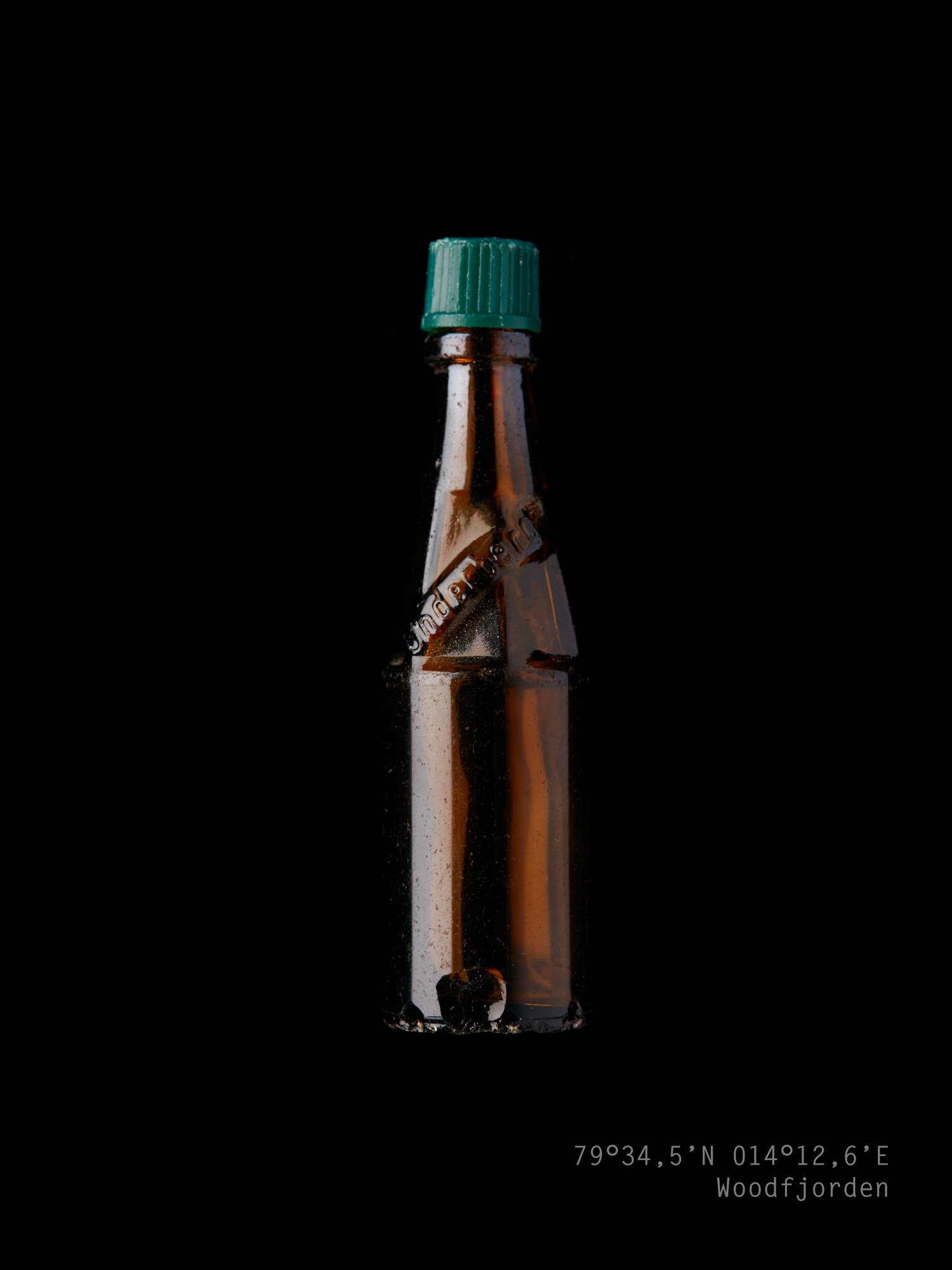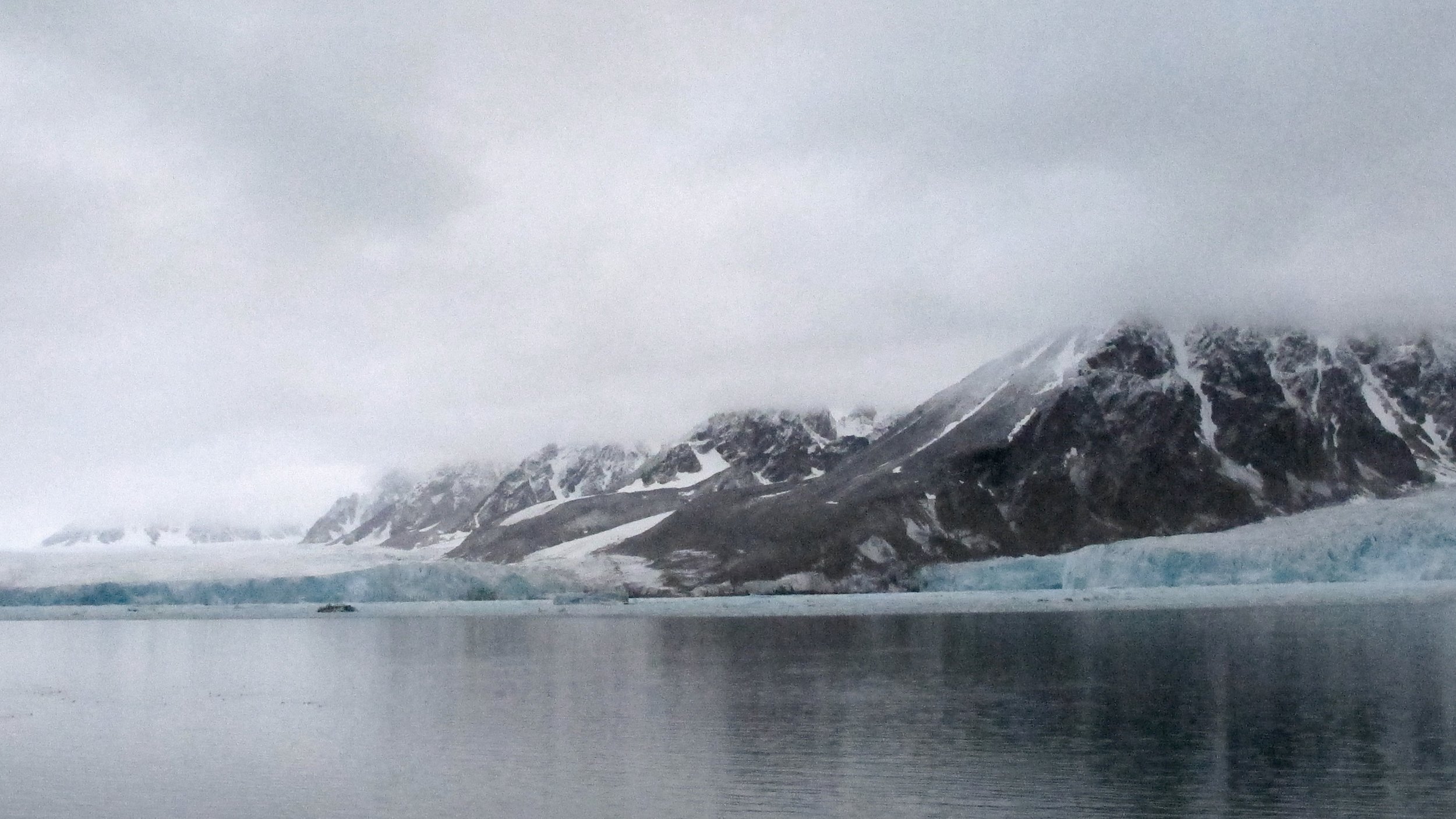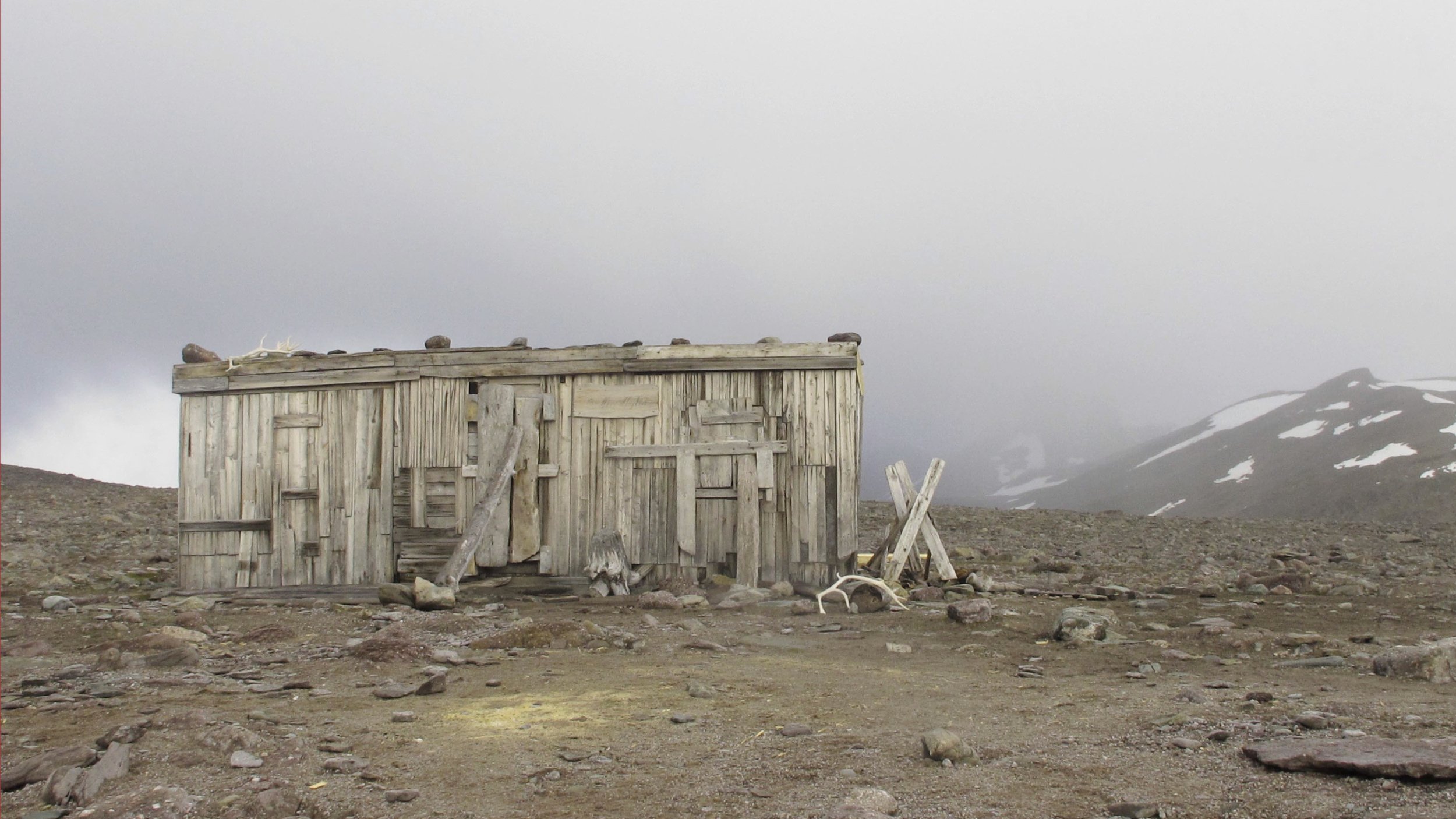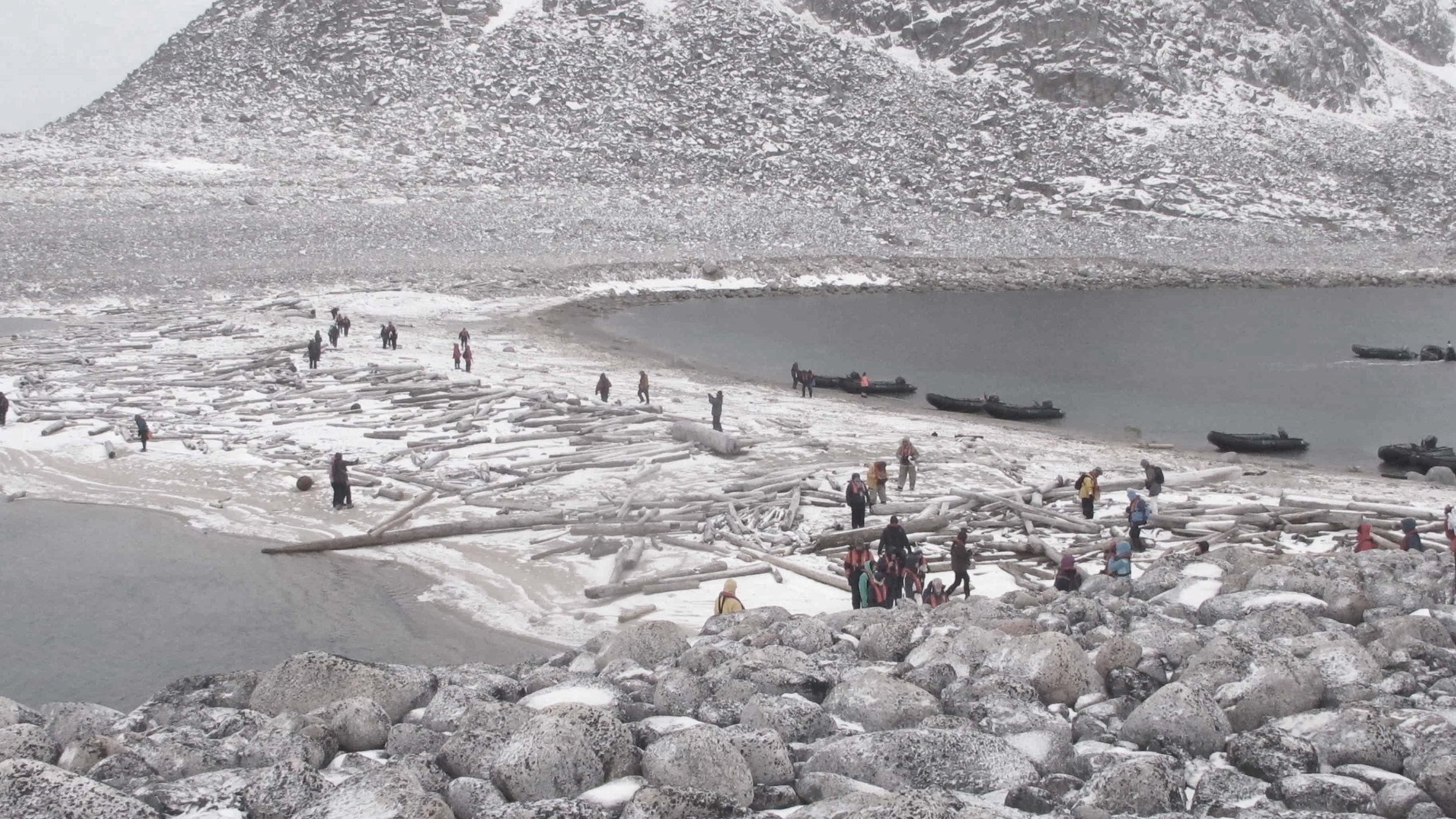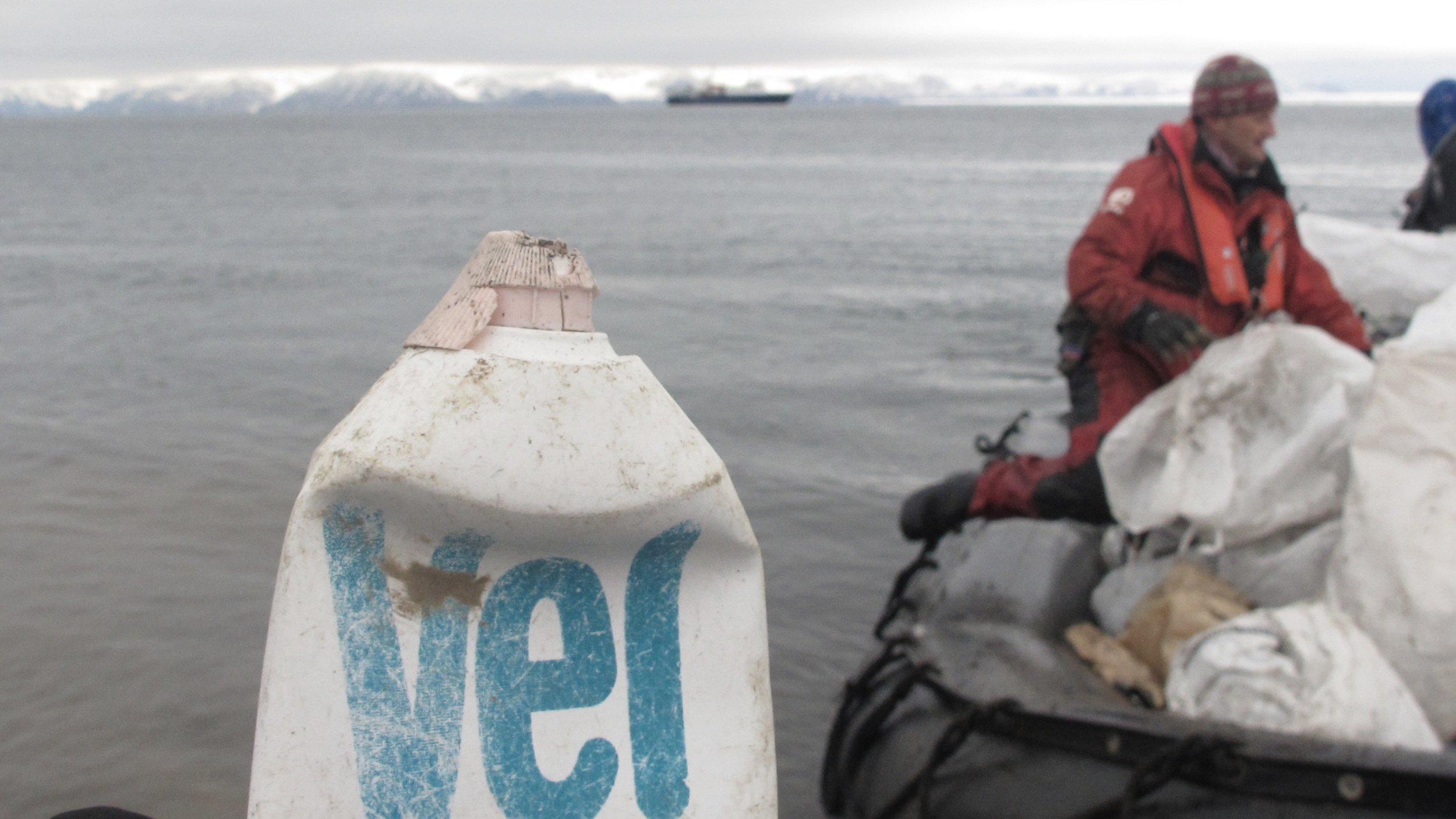Aqua mess: Our Synthetic Footprints On Top of the World
Found in the Arctic: melting ice, polar bear tracks, plastic pollution.
Near the 80th parallel north, you’re more likely to find polar bear paw prints than human bootprints in the snow. You're also likely to find a human footprint of another kind: plastic. In the span of just half a century, our collective synthetic addiction has rendered pristine wilderness obsolete. Plastic pollution from all over the world is carried by ocean currents and deposited everywhere — from the bottom of the sea to even the most isolated Arctic landscapes, areas already pushed to their limits by human-driven climate change.
Last year, artist and activist Carol Devine traveled to Svalbard, Norway, on an expedition to address marine debris accumulations near the North Pole. She went to take action against plastic pollution, and turned the journey itself into a floating art exhibition, Discard/art Svalbard, hoping to create a catalyst for inspiration and change. By documenting the expedition findings in portraits of garbage, she delivers a powerful wake-up call for humanity: we are all more connected than we realize. It’s time to clean up our act.
We asked Carol about her journey and latest exhibition, Aqua mess, which documents items found at the top of the world.
"I feel I’m saying both hello and goodbye to these magnificent animals and spectacular glaciers, a melancholy and an embracing of the present and their formidable yet oblivious presence."
What inspired your Discard/art Svalbard Floating Exhibition? I went above the Arctic circle to help with Clean Up Svalbard, a stewardship project initiated by the Governor of Svalbard to literally clean up the garbage that accumulates on the shores of Norway’s northernmost archipelago.
Intrigued by images I’d seen of art and objects made from recycled garbage, I thought it could be interesting to bring some of these images on the ship to enhance our discussions on the reach and travesties of marine pollution today. I also wanted to support a conversation on how art collaborations make us think more about the ways we consume, and what we can do about the global trash problem. I had also seen a devastating photo of two Svalbard reindeer on a stunning expanse of icy land, their antlers caught together in green fishing rope. I tracked down the man who captured the photo, Sveinung, to ask to include his work in the exhibit (and to find out if he was able to rescue the lethally connected reindeer...thankfully, he could). The image is one powerful symbol of why we were doing the cleanup.
Having recently been involved in a book-making project telling the story of an Antarctic cleanup project I led years ago, I was interested to contemplate alongside others how images of beauty and of the devastation of beauty may (or may not) influence behaviors and policy.
Plus, icebreakers are a great place for ‘pop up exhibits’ mounted with magnets — they’re made of so much metal!
The cleanup and floating exhibition brought you to the top of the world, within the circle of latitude at 80° North. How far is that from your home? I live in Toronto, Canada at 43.6532° N, 79.3832° W. Canada is the “The Great White North” but Toronto sits at a lower latitude than Paris, Seattle, and Moscow. I spent my formative years even farther north in a small northern Ontario town where the winters are super long and fierce. I love snow and I’m deeply concerned about the warming of the polar regions, the 'refrigerators' of the world, and about glacial retreat—the impact it has, and will have, on humans and ecosystems.
The northernmost settlement in the world is Longyearbyen, the administrative centre of Svalbard at 78ºN. I flew to Longyearbyen via Oslo late last August to join the ship, The Ortelius, which would take us on the cleanup project. I was smiling ear to ear to have reached this far north but we’d go even farther; on Sept 1 we reached 81°N38,5’N 019°48,8’E in the pack ice. The sun barely set at night and I slept with eyeshades.
What drew you to the Arctic in the first place? I went to do a very humble part in helping clean up, and I also went to be a witness of the changing, melting Arctic and the extraordinary beauty and wildlife of Svalbard, including the apex of mammals, the polar bear, Ursus maritimus.
I feel I’m saying both hello and goodbye to these magnificent animals and spectacular glaciers, a melancholy and an embracing of the present and their formidable yet oblivious presence.
What’s the message you hope to send through your current project, Aqua mess? I’m asking people to look, to be intrigued, and hopefully then be indignant or moved. My message is love our planet, clean up, and stop trashing it.
I’m always kicking myself and my family in the pants to do more with less. We have to take responsibility, especially us living in relatively stable, wealthier countries. Many people already know that nowhere in the world is safe from our trash, but perhaps some think surely the plastic doesn’t accumulate way up there. I thought a survey of what we’ve found thus far in the ‘pristine’ Arctic Circle may help people learn more about marine debris and think more about how they can contribute to reducing, recycling, and intercepting garbage (#ParleyAIR). Or among those that already do, to continue to be inspired to do so.
I hope the images of the garbage give people pause. Even the smallest items are invasive.
What shocked you most about finding trash at the top of the world? On the first beach stop, Raudfjord, or Red Bay, for its red-tinged soil from iron-rich sandstone, I was shocked to see plastic tucked behind huge logs (floated in from Siberia, apparently, as we were above the tree line), sitting next to rocks and strewn about. It was late summer and the flowers were few — the colors were mainly natural hues: reddish, grey and brown with patches of snow. And then there would be this bright blue piece of plastic.
Plastics enter the food chain, threatening our and other species’ health. I’d heard about microplastics—polymer beads, fibers, or fragments less than 5 millimeters long—and how they end up in the ocean, and now I was seeing this tragic disintegration before my eyes. It’s so sudden, illusive, and final.
How does the trash get 'way up there'? Plastics can travel great distances, certainly in part because of their buoyancy. You’ve heard of the yellow rubber duckies from a North Pacific cargo spill in 1992? Some made it to the Arctic and were found frozen in the ice.
Shortly after we got home from the Svalbard Cleanup, the Alfred Wegener Institute, Helmholtz Centre for Polar and Marine Research published a study in which for the first time researchers show that marine litter can even be found at the sea surface of Arctic waters. "Though it remains unclear how the litter made it so far north, it is likely to pose new problems for local marine life." The study suggests that plastic litter in Fram Strait could be leaking from a sixth garbage patch (or gyre) believed to be forming in the Barents Sea, part of the Arctic Ocean.
Some guides on our cleanup trip believed garbage also travels to the Arctic from the Gulf Stream. Svalbard is surrounded by the Arctic Ocean, the Barents Sea, Greenland Sea, and the Norwegian Sea. Scientists who’ve taken ice cores in the Arctic have found small pieces of plastic. They speculate that frozen Arctic ice traps floating microplastics. The consequences are not totally certain, but there’s reason to worry.
Why protect the oceans? What is it about saltwater? A friend of mine convinced me to learn to scuba dive when she said water covers 70 percent of our Earth. I wanted to explore this part of the planet, too, by swimming, snorkeling, paddle surfing and boating. It wasn’t until I moved to Australia in the 1990s that I fell in love with saltwater; I’d been in plenty of lakes. Saltwater makes me feel in touch with a whole other part of myself and the world. It feels wilder, somehow more dangerous (you can’t drink it), yet thrilling to be in the saline surf. I feel like I’m in the presence of awesome, mind-blowing species in saltwater, too, such as turtles and manta rays.
Are you optimistic about the future? Where are you seeing signs of progress? What needs to happen? Great question. A friend recently posted on social media about a paper on mass extinction, about us being on the precipice or in the midst of the sixth extinction of plants and animals in the past half-billion years. How depressing is the phrase ‘mass extinction’? Yet I’m optimistic, because no truly sane person can deny the impact of climate change and fossil fuel use, and there is a lot of courage and innovation going on to address it.
I’m a humanitarian working on pressing issues facing some of the world’s most vulnerable people and what I see firsthand and learn tells me that to help solve environmental and pollution problems putting us humans and all species at risk, we have to tackle injustice and inequity, greed. I feel we’re starting. It’s a constant battle. Fear holds a lot of people back from action, especially in wealthier countries; there’s a fear of losing the status quo.
I love to hear about new fishing nets that reduce bycatch. I love knowing that companies are changing to planet-friendly products and people see the connection between global and earth health, between human and animal rights. Dr. Jane Goodall was is an inspiration on that front. We humans have done some heinous things, but we’ve also done wonderful things and have made remarkable changes for the better. I am optimistic, but not complacent — we can’t wait to act only when we see the flames when we already know the embers are hot.
Do you have an ocean hero? Someone I admire is marine biologist, Dr. Katherine Townsend. Not a famous ocean hero but a committed one. She’s a Canadian living for some time now in Australia working with Project Manta trying to help understand and protect manta rays. Mantas are a mysterious and threatened species with majestic wings. I had the fortune to snorkel with them— they’re like huge alien swimming dogs. Manta Rays are on the IUCN Red List of Threatened Species and are not currently protected in Australian waters. We know more about them thanks to Kathy and team.
Favorite sea creature(s): Manta rays and narwhals. Like unicorns but real.
What’s the most surprising item you’ve found? One of the guys who joined the cleanup, a businessman from the Netherlands, saw something shiny and called us over. It was a massive metal airplane wing...surprising because this land has seen so few people. From its first visits in 1595, Svalbard had explorers, hunters, and miners. Now it has researchers and a growing tourism trade, but it’s a harsh place to live with months of darkness. I offered to help carry the airplane wing; it was bloody heavy! It could have been decades old and, someone speculated, even from WWII. Metals can be toxic, too. We had to leave the wing, but in total, over four days covering some 10 nautical miles, we picked up 13.5 cubic meters of garbage, including 3.5 cubic meters of plastic nets.
Where can people see Aqua mess and the Svalbard exhibition findings? I’m thrilled that the Canada Science and Technology Museum in Ottawa wants to display the Svalbard trash! They have an exhibit opening in their new museum in November 2017; a section devoted to the oceans, marine science, and ocean health. The Museum’s curator, Dr. David Pantalony, encouraged me to bring the trash home from Svalbard. I’m inspired such exhibits as this one in Canada are happening, and initiatives such as Parley for the Oceans, MOOCS on marine debris and activism on ocean, water, earth, and human rights protection are too. It’s all interrelated, we are all connected.
The first pillar of the Parley A.I.R. Strategy (Avoid, Intercept, Redesign) to end ocean plastic pollution is AVOID. What's one plastic item you’ve banned from your life? Bags. The packaging in so many household products is outrageous and unnecessary. We in the western world have (almost) lost touch with reality. We have to tell manufacturers with our wallets that we don’t want razors packaged in three plastic layers like they contain a precious fragile amulet that would explode if not packaged so.
One thing people should know about the top of the word: Wild, wild, wild. It’s so quiet yet each sound is spectacular. Barking walruses, cracking ice, icy cold wind on the ship deck. It’s special and being there in the pack ice, it felt like time traveling.
Header image: Sveinung Råheim, Svalbard reindeer caught in fishing net, Nordenskiøldkysten.








